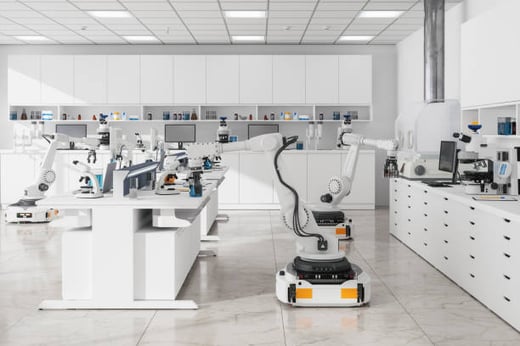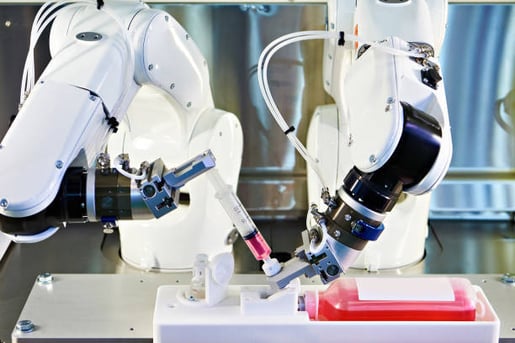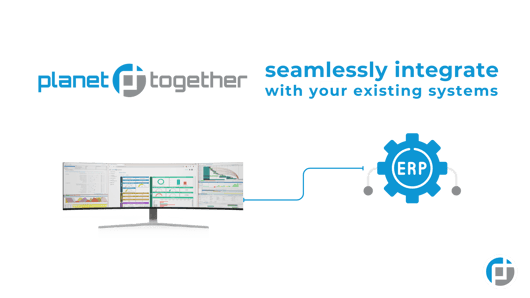
Empowering Precision and Efficiency: How Advanced Robotics and Automation are Transforming Medical Manufacturing
Plant managers in medical manufacturing face the challenge of maintaining uncompromising quality while responding to growing demand, regulatory scrutiny, and cost pressure. The margin for error is razor-thin when lives are on the line, and production processes must deliver surgical precision. In this context, advanced robotics and automation are becoming essential pillars of modern medical manufacturing.
As manufacturers move toward Industry 4.0, the integration of intelligent automation solutions with advanced planning systems like PlanetTogether, combined with ERP platforms such as SAP, Oracle, Microsoft Dynamics, Kinaxis, or Aveva, is transforming operational workflows. The result is a more connected, data-driven, and agile production environment—often referred to as the smart factory.
Why Advanced Robotics Matter in Medical Manufacturing
The application of robotics in medical device and pharmaceutical manufacturing has expanded from simple repetitive tasks to high-precision, multi-axis operations that involve delicate assembly, intricate inspections, and sterile packaging. Advanced robotics provide:
Unmatched Consistency and Accuracy: Robots can handle delicate and complex components like catheters, implants, or surgical instruments with minimal variance.
Scalability Without Compromising Quality: Automation enables facilities to meet rising demand without overburdening human labor or risking quality dips.
Sterile and Contaminant-Free Operations: In cleanroom environments, robots minimize the risk of human contamination and ensure regulatory compliance.
As global demand for medical devices continues to grow, robotics provides the speed and reproducibility required to stay ahead of market needs.

Automation Across the Production Lifecycle
Component Assembly and Microfabrication
Many medical devices involve tiny components that require sub-millimeter precision. Robotic arms equipped with advanced sensors and machine vision can assemble micro parts at speeds and accuracy levels far beyond human capability.
Quality Inspection and Compliance
Inspection is a cornerstone of medical manufacturing. Robots now use high-resolution cameras, AI-powered image recognition, and laser scanners to detect surface flaws, dimensional deviations, or packaging inconsistencies.
Automation platforms integrated with planning and scheduling systems can log, analyze, and report quality metrics in real time, easing the burden of compliance with FDA and ISO regulations.
Packaging and Labeling Automation
Packaging in medical manufacturing isn't just about containment—it must also preserve sterility, provide traceability, and meet labeling standards. Robotics combined with smart labeling systems automate these tasks with precision and consistency, helping to meet UDI (Unique Device Identification) regulations.

Integrating Robotics with Planning and Scheduling Systems
Robotics and automation can achieve their full potential only when integrated into a comprehensive production planning ecosystem. That’s where PlanetTogether APS, in collaboration with ERP systems like SAP, Oracle, Microsoft Dynamics, Kinaxis, or Aveva, plays a pivotal role.
These integrations allow plant managers to:
Synchronize production schedules with machine availability and robotic capacity
Dynamically reallocate resources in response to real-time production delays
Balance workloads between human and robotic operations
Monitor OEE (Overall Equipment Effectiveness) and predict maintenance needs
For instance, a facility using PlanetTogether integrated with SAP can automatically adjust production plans based on sensor feedback from robotic equipment, identifying bottlenecks and rerouting jobs as needed—all while maintaining traceability and audit readiness.

Benefits of Integrated Robotics and Planning
Increased Throughput with Fewer Errors
By combining automation with PlanetTogether’s advanced planning engine, plant managers can reduce downtime, eliminate manual scheduling errors, and improve throughput.
Enhanced Visibility and Predictability
Real-time integration with platforms like Oracle or Microsoft allows production managers to visualize machine status, identify capacity constraints, and simulate “what-if” scenarios before making scheduling decisions.
Reduced Cost of Compliance
Medical manufacturing must adhere to stringent regulations. Integrating robotic inspection systems with Kinaxis or Aveva provides automated documentation, compliance audit trails, and real-time alerts for deviations.
Faster Time to Market
With optimized production planning and robotic execution, new products can transition from design to delivery more quickly, giving your organization a competitive edge in a rapidly evolving healthcare landscape.
Overcoming Implementation Challenges
Adopting advanced robotics and automation requires careful planning, especially in regulated environments like medical manufacturing. Some key considerations include:
Workforce Training: Robots don’t replace workers—they augment them. Training operators to work alongside automation fosters collaboration and boosts productivity.
Data Integration: Seamless communication between robotic systems, APS platforms like PlanetTogether, and ERP software is essential for accurate planning. Middleware and APIs are often used to enable interoperability.
Change Management: Embracing automation is as much about culture as it is about technology. Clear communication, pilot projects, and early stakeholder involvement are crucial.
By proactively addressing these areas, plant managers can avoid common pitfalls and accelerate ROI from automation investments.
Unlocking Operational Excellence with Automation
For plant managers in medical manufacturing, advanced robotics and automation are no longer optional—they’re essential for delivering the precision, scalability, and reliability that the industry demands.
By integrating these technologies with powerful planning platforms like PlanetTogether and enterprise systems such as SAP, Oracle, Microsoft Dynamics, Kinaxis, or Aveva, manufacturers can orchestrate smarter production environments that meet both market demands and regulatory mandates.
The journey toward automation isn’t just about machines—it’s about creating a more connected, intelligent, and resilient manufacturing operation ready to face the future.
Are you ready to take your manufacturing operations to the next level? Contact us today to learn more about how PlanetTogether can help you achieve your goals and drive success in your industry.